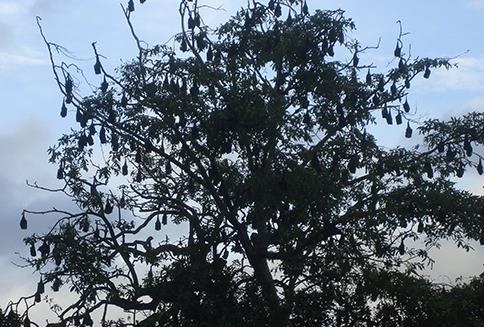
Outbreak of Nipah virus encephalitis in the Kerala state of India
On 19 May 2018, a Nipah virus disease (NiV) outbreak was reported from Kozhikode district of Kerala, India. This is the first NiV outbreak in South India. There have been 17 deaths and 18 confirmed cases as of 1 June 2018. The two affected districts are Kozhikode and Mallapuram. A multi-disciplinary team led by the Indian Government’s National Centre for Disease Control (NCDC) is in Kerala in response to the outbreak. WHO is providing technical support to the Government of India as needed. WHO does not recommend the application of any travel or trade restrictions or entry screening related to the NiV outbreak.
The Nipah outbreak reported in Kozhikode and Malappuram districts of Kerala in May 2018 was the third of Nipah Virus Outbreaks in India, the earlier being in 2001 and 2007, both in West Bengal. A total of 23 cases were identified, including the index case with 18 laboratory-confirmed cases. The outbreak was managed by the state government and central government agencies and has been acknowledged as a success story.
Recognizing the importance of documenting and sharing the Kerala experience, the Kerala government requested WHO to conduct an external review and documentation of the NVD response. SEARO HIM team led a joint RO & WCO team to review the programmatic response to the NVD outbreak and document successes and challenges faced during the response to enable better understanding with respect to future readiness for high threat pathogens
The public health response and its performance were reviewed along with three domains of inquiry:
- Coordination structure and mechanisms that were in place and that was established anew in response to the outbreak.
- Performance of surveillance and interventions including non-technical support functions
- Assessment of reduction of transmission and impact of interventions.
Kerala is known for achieving impressive health outcomes at modest incomes compared to the rest of the states in India. Accordingly, Kerala relied on the strengths of its health system to contain the outbreak. The leadership and commitment of all levels of Indian health authorities were seen (state authorities, MoHFW, NCDC, EMR, ICMR (NIE, NIV)) and private sector (inside and outside Kerala).
However, the outbreak response was characterized by a large degree of improvisation at the early stage of response. Technical shortfalls were compounded by a relatively inexperienced cadre of surveillance personnel requiring further training in field epidemiology and data analysis. Despite continuing and close collaboration between India and WHO, data sharing on the extent of the outbreak response and its efficiencies was sparse. The opportunity was also missed to prospectively and timely collect accurate data to further understand the epidemiology, clinical and virologic characteristics of NVD and make a timely introduction of emergency-driven clinical trials of various curative treatment options
The outbreak of Nipah demonstrated that Kerala and the rest of the country are exposed to the high risk of another outbreak making preparedness vital. The Kerala NVD outbreak underscored the need to encourage annual preparative work before the traditional Nipah seasons.
On an urgent basis, awareness of signs and symptoms of Nipah must be raised among the community and healthcare professionals.
Simultaneously, reminding of case definitions, strengthening infection control practices including ensuring prepositioning of medical supplies and adequate stocks of personal protection equipment would be important steps in managing any similar outbreak in the future.
Familiarising hospital staff with standard operating procedures and protocols for incident management, through tabletop exercises will ensure readiness; and maintaining universal precautions and hospital IPC practices regardless of the type of patient handled would be the need of the hour.
In addition, moving towards electronic health reporting and health information management systems would be critical for managing and responding to acute events such as these.
